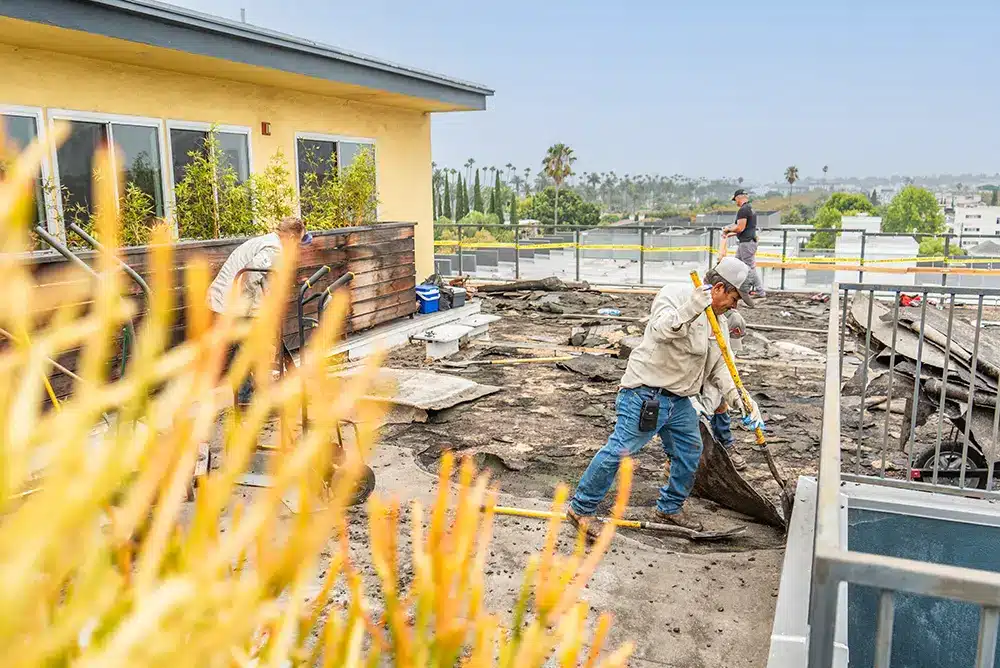By Dan Cahill
At SBR Roofing, we recognize that commercial roof restoration offers a range of practical and financial advantages for property owners seeking to protect their investments. Restoration provides a cost-effective solution to address roof deficiencies without the need for full replacement, thereby extending the service life of the existing roof, improving energy efficiency, and minimizing operational disruptions. Our decades of experience have shown that when applied at the right time and with the right system, roof restoration delivers long-term value, superior protection against leaks and moisture, and measurable savings, all while supporting sustainable building practices.
Leak Prevention and Moisture Protection
A commercial roof restoration is an effective way to repair existing leaks and prevent future ones from occurring. While restoration services can vary in scope depending on the specific needs of a building, a professionally executed restoration is designed to seal leaks and reinforce the existing roof system. This proactive approach not only addresses current issues but also helps safeguard the property against potential water intrusion in the future.
Extending The Lifespan of Commercial Roofs
A commercial roof restoration can extend the lifespan of a roof, although the extent of that extension depends on the quality of the restoration system and the materials used. On the shorter end, a restoration might add around five years to the roof’s life, but that is not very common because the cost-benefit of such a short-term solution typically does not make financial sense. More common options extend the lifespan by 10, 15, or even 20 years, with the 10-year system being the most frequently chosen. Fewer property owners opt for five or seven-year extensions because the investment required does not usually justify the limited additional years of service the roof would provide.
Cost Savings Compared to Full Roof Replacement
The cost savings from a commercial roof restoration compared to a complete replacement can vary based on the restoration system selected. For the most common choice—a ten-year restoration—the cost typically amounts to 40% to 60% of what a complete re-roof would require. This makes it an attractive option for many property owners seeking long-term value without the higher price tag.
For those aiming for a longer-lasting solution, such as a twenty-year restoration, the savings are smaller. In these cases, the cost is typically around 75% of the price of a complete replacement. Although a twenty-year system provides impressive longevity, it comes with a higher initial investment and other trade-offs to consider.
Beyond cost, one of the key advantages of restoration over re-roofing is the minimal disruption to building operations. Restoration projects are generally quieter, cleaner, and less intrusive, helping businesses and occupants continue their activities with fewer interruptions. In most cases, the 40% to 60% savings range reflects what both industry experts and property managers typically experience.
Energy Efficiency Improvements and Lower Utility Bills
Commercial roof restoration offers distinct advantages in terms of both energy consumption and environmental impact. From an energy perspective, most restoration systems utilize highly reflective white coatings that absorb significantly less heat than conventional, darker materials, such as black asphalt-based roofing. This increased reflectivity helps keep buildings cooler by minimizing heat absorption—a particularly valuable benefit in California’s warm climate. As a result, property owners often see a reduced reliance on air conditioning systems or evaporative coolers, which improves overall energy efficiency and lowers utility costs.
On the environmental side, roof restoration generates significantly less waste compared to a full replacement. A re-roof typically involves tearing off the existing materials, much of which ends up in landfills despite occasional recycling efforts mandated by local regulations. In contrast, restoration preserves the existing roof structure and produces minimal waste, keeping more materials out of landfills and reducing the project’s overall environmental footprint. This makes restoration a smarter, greener choice for sustainable building management.
Compliance with Title 24 and Local Building Codes
A commercial roof restoration can help bring an existing roof into compliance with code or environmental regulations, provided certain factors are considered. For example, if a roof does not meet California Title 24 (Title XXIV) energy efficiency standards, applying a restoration system can typically achieve compliance for the existing structure. This is because restoration is generally categorized as maintenance rather than a complete re-roof, and therefore, it is subject to a different set of compliance requirements. In contrast, a full re-roof triggers additional Title 24 criteria and more stringent performance metrics. By incorporating a reflective, cool roof surface as part of the restoration, the building gains the compliant features that may have been missing, enabling the property to meet regulatory standards without the need for a complete replacement.
Enhanced Durability Against Southern California Weather
A commercial roof restoration generally does not enhance a roof’s resistance to Santa Ana winds, except in limited cases where specific materials or techniques might offer a slight improvement. Santa Ana winds are powerful, dry gusts that require structural reinforcements beyond what typical restoration systems provide.
In contrast, a roof restoration can significantly strengthen a roof’s ability to withstand El Niño conditions. Restoration enhances the roof’s overall integrity, restoring it to its original performance level without the need for a full replacement. This renewed condition is especially valuable during El Niño seasons, which tend to deliver not only a greater volume of rain but also more severe individual storms. A well-restored roof is better prepared to handle the intense rainfall and storm activity associated with El Niño, offering property owners peace of mind and added protection during these challenging weather events.
Case Studies
One project that highlights the real-world benefits of commercial roof restoration involved an 80,000-square-foot warehouse in Van Nuys, near the airport. This facility was operated by a company specializing in event rentals—providing everything from tables, chairs, and backdrops to fire pits for graduations, weddings, and major Hollywood events. The company reached out for help because they were experiencing persistent roof leaks, particularly around several large electrical panels that powered the building. While much of their inventory could withstand occasional moisture, these leaks created a serious safety hazard. When water seeped near the panels, the lighting would short out, forcing operations to stop entirely because it was unsafe for staff to work in the dark.
The aging roof was restored with a system backed by a ten-year warranty. The timing was fortuitous: the following winter turned out to be one of the wettest California had experienced in years. Thanks to the restoration, the building remained leak-free throughout the season. The company successfully maintained a safe working environment for its 200 employees, with no disruptions to operations resulting from roof leaks. What had previously been a recurring cause of costly work stoppages was fully resolved, demonstrating how a well-executed restoration can protect a business and ensure continuity even in extreme weather conditions.
Conclusion
While commercial roof restoration is a highly effective and cost-saving option, it’s not suitable for every situation. For a roof to qualify for restoration, it must still be in a condition where the system can effectively extend its life and performance. In some cases, a roof may have deteriorated to the point where restoration is no longer viable, making complete replacement the only feasible option.
Because restoration typically costs about 40% to 60% of a complete re-roof, it’s essential to act while the roof is still a good candidate for this approach. Delaying action—whether for budget reasons or scheduling preferences—can mean missing the window of opportunity. A roof that is restorable today could degrade beyond that point within a year if neglected. That is why regular professional inspections are so necessary. Even if restoration isn’t planned immediately, staying informed about the roof’s condition ensures property owners can make timely, cost-effective decisions and avoid unexpected replacement costs.
Author Bio
Dan Cahill embarked on his journey in 2001, accumulating over 23 years of experience in the commercial roofing field. The original owner of SBR Roofing extended a trial opportunity in 2001, coinciding with the dot-com bubble burst. The proposition was simple: give it a year, see if it suits you, and if not, no hard feelings. Surprisingly, Dan found himself sticking around. Fast-forward over two decades, and he continues to thrive in the field.
With a background in sales, Dan discovered a passion for the dynamics of salesmanship, particularly in the freedom it offered from the confines of a desk. The opportunity to engage with people, navigate various situations, and even climb up on roofs appealed to him. This intriguing experience kept Dan hooked, prompting him to stay the course, eventually becoming a leader in the roofing industry.







